Embarking on a gazebo project is your ticket to transforming an ordinary backyard into a personal oasis, where relaxation meets elegance. Whether you’re a seasoned DIY enthusiast or just dipping your toes into outdoor design, our guide, “11 Gazebo Design Ideas for Your Next Project,” is packed with inspiration and practical tips that will ignite your creative spark. You’ll discover how the right gazebo can become the centerpiece of your outdoor sanctuary, offering both style and functionality.
Imagine the joy of sipping morning coffee under a beautifully crafted gazebo, or hosting unforgettable gatherings with family and friends in a space that reflects your unique style. Our carefully curated design ideas cater to all skill levels, ensuring you feel confident and excited about your outdoor transformation. Dive into our guide and unlock the rewards of a stunning, personalized outdoor living space that enhances your home and lifestyle.
Incorporate Natural Wood Elements
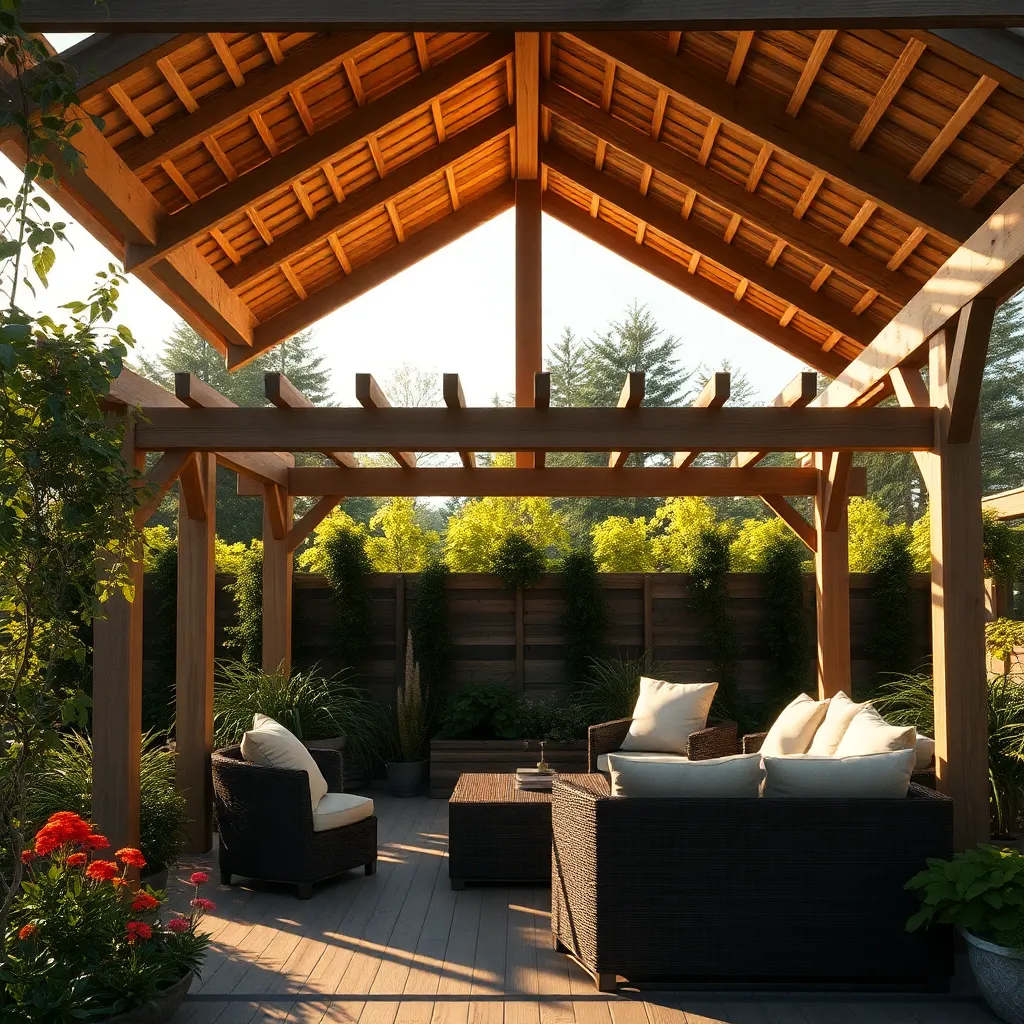
Incorporating natural wood elements into your gazebo design can create a warm, inviting atmosphere that blends seamlessly with the outdoors. Start by selecting durable wood types such as cedar, redwood, or pressure-treated pine, known for their resistance to weather and insects. Consider using large wooden beams or logs to construct the frame, which not only adds rustic charm but also provides sturdy support. Beginners should ensure the wood is properly sealed to prevent moisture damage, while more advanced DIYers might explore techniques like tongue-and-groove joints for a clean finish.
For added visual appeal, integrate wooden details into the design. You can create a lattice roof or use wooden slats for the gazebo’s side panels, which allows sunlight to filter through while maintaining a sense of privacy. Opt for a natural finish to highlight the wood grain, or use a stain that complements your garden’s color palette. Accessorize with wooden furniture or planters to tie the look together, ensuring all elements are weatherproofed for longevity. With thoughtful use of wood, your gazebo can become both a functional and aesthetic centerpiece in your outdoor space.
Choose Weather-Resistant Materials
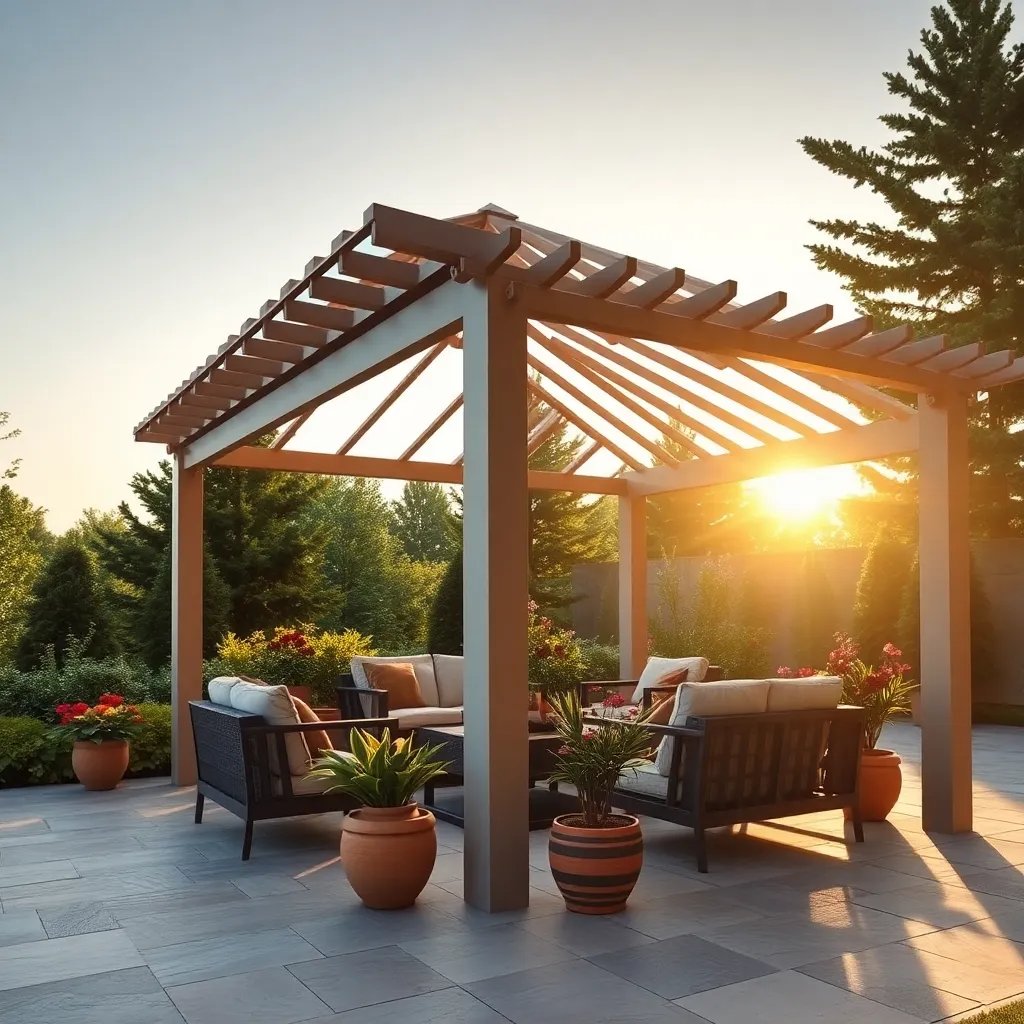
When designing a gazebo, choosing weather-resistant materials is crucial to ensure longevity and low maintenance. Opt for materials like pressure-treated wood, galvanized steel, or aluminum, which can withstand varying weather conditions without quick deterioration. For roofing, consider options like polycarbonate panels or weatherproof fabric, which provide durability and UV protection while allowing some natural light to filter through.
Beyond basic material choices, incorporating advanced elements can enhance your gazebo’s resilience. Using stainless steel fasteners and connectors helps prevent rust and corrosion, ensuring structural integrity over time. For flooring, consider composite decking or stone tiles, which offer a sturdy, slip-resistant surface that holds up well under the elements. These thoughtful choices not only enhance the gazebo’s durability but also add a touch of sophistication to your outdoor space.
Add Built-In Seating Areas
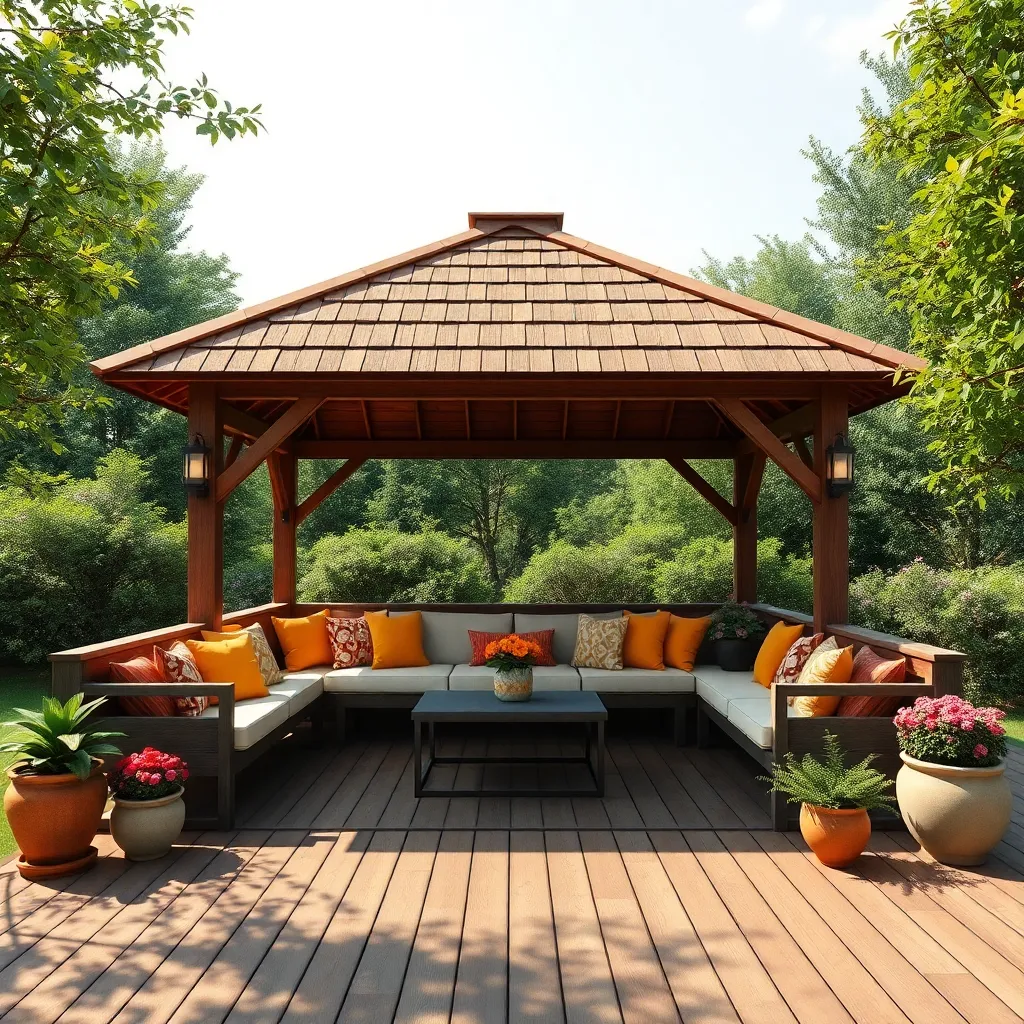
Incorporating built-in seating within your gazebo not only maximizes space but also enhances functionality and comfort. Opt for materials like weather-resistant wood or composite decking that can withstand the elements while providing a sturdy base. To create a cozy atmosphere, consider adding cushions made with outdoor fabrics, which are both durable and stylish. For beginners, start with a simple bench design with straight lines, while more experienced DIYers might explore curved or sectional seating for added flair.
To ensure your seating is both comfortable and practical, aim for a seat height of around 18 inches, which is standard for most outdoor furniture. Under-seat storage can be a clever addition, offering a place to tuck away cushions and outdoor accessories when not in use. Advanced builders could incorporate built-in planters at the ends of benches to seamlessly blend greenery with seating areas. Use these design elements to create an inviting space that encourages relaxation and social gatherings.
Integrate Solar-Powered Lighting
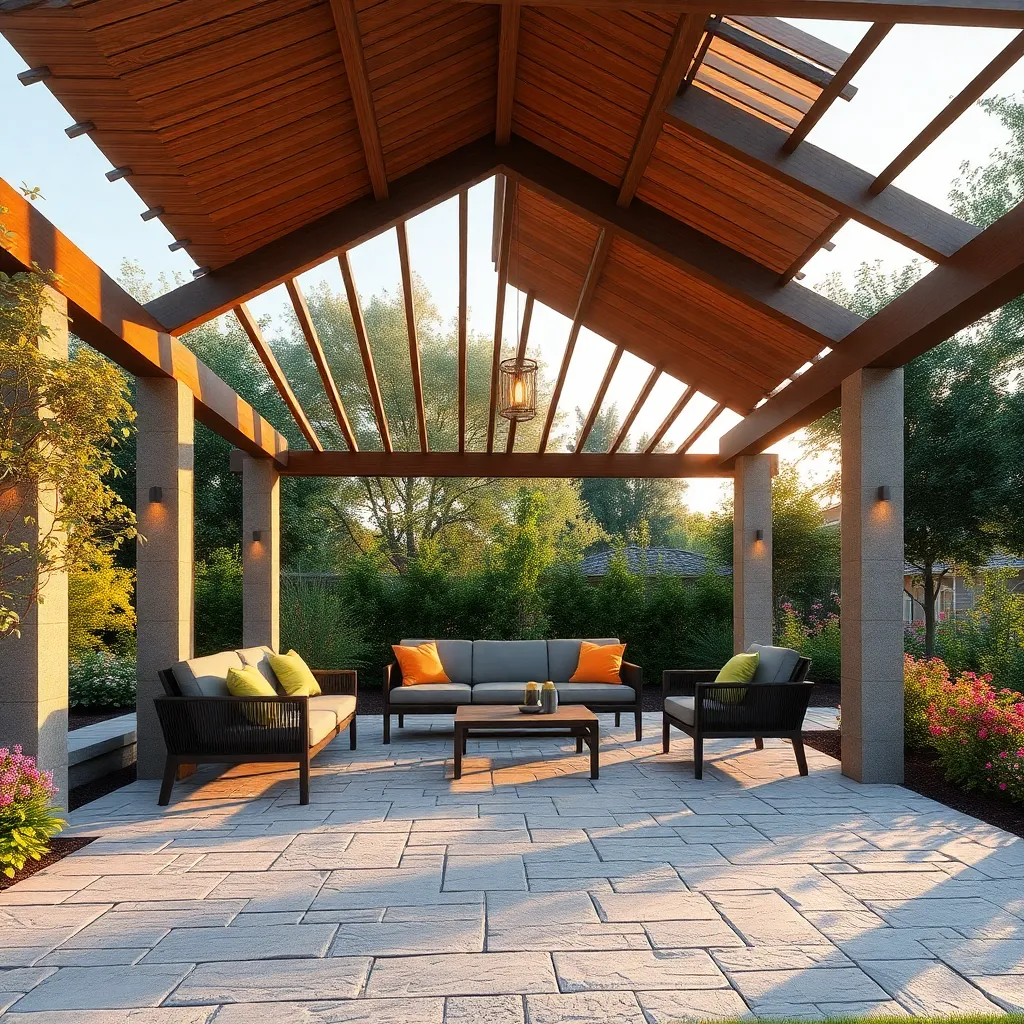
To enhance the ambiance of your gazebo, consider integrating solar-powered lighting. This eco-friendly option is not only cost-effective but also straightforward to install, making it perfect for both beginners and seasoned DIY enthusiasts. Choose from a variety of styles like string lights, lanterns, or even built-in post lights. Ensure that the solar panels are positioned to receive ample sunlight throughout the day for optimal performance, and opt for LED bulbs to maximize energy efficiency and longevity.
For a seamless look, incorporate the lighting into the structure of the gazebo itself. Consider integrating solar panels into the roof design or attaching light fixtures to the beams. Advanced gardeners can explore programmable solar lighting systems, allowing for customizable settings such as brightness and automatic on/off functions. When selecting fixtures, look for weather-resistant materials like stainless steel or durable plastic to withstand outdoor conditions. This thoughtful addition not only brightens your evenings but also enhances the overall aesthetic of your outdoor space.
Design Multilevel Roof Structures
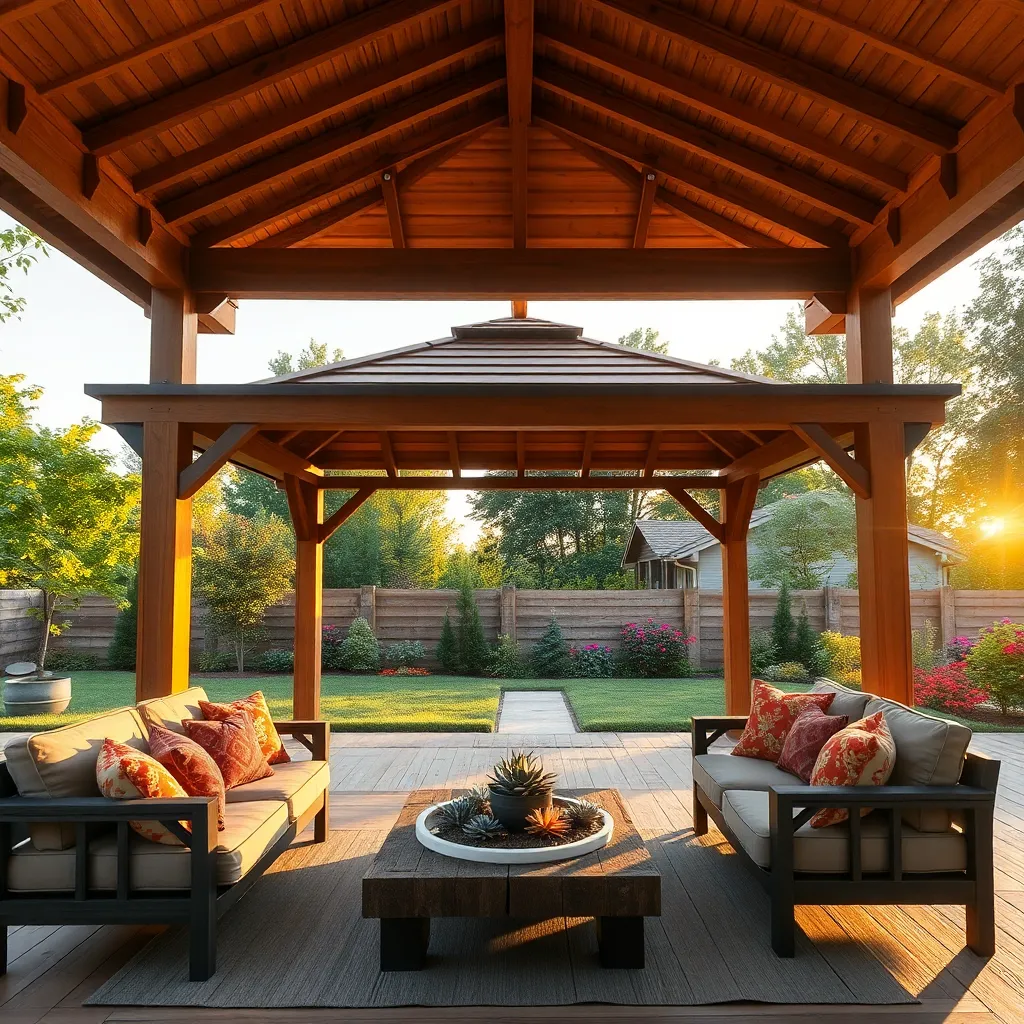
Designing multilevel roof structures for your gazebo can create a visually striking focal point in your outdoor space. Start with a basic two-tiered design using durable materials like cedar or pressure-treated pine, as these are both weather-resistant and easy to work with. For a more advanced project, consider incorporating a third level or an asymmetrical layout using metal or composite panels for a modern touch. Ensure each level is properly aligned to allow water runoff and maximize shade.
A multilevel roof not only enhances aesthetic appeal but also improves air circulation beneath the gazebo, making it a comfortable retreat during hot summer days. When constructing, use brackets and connectors specifically designed for outdoor use to ensure stability. For added flair, include decorative elements such as finials or intricate latticework between levels. Keep dimensions and spacing consistent to maintain balance and harmony in the design, and remember to secure the structure firmly to withstand wind and weather conditions.
Install Retractable Privacy Screens
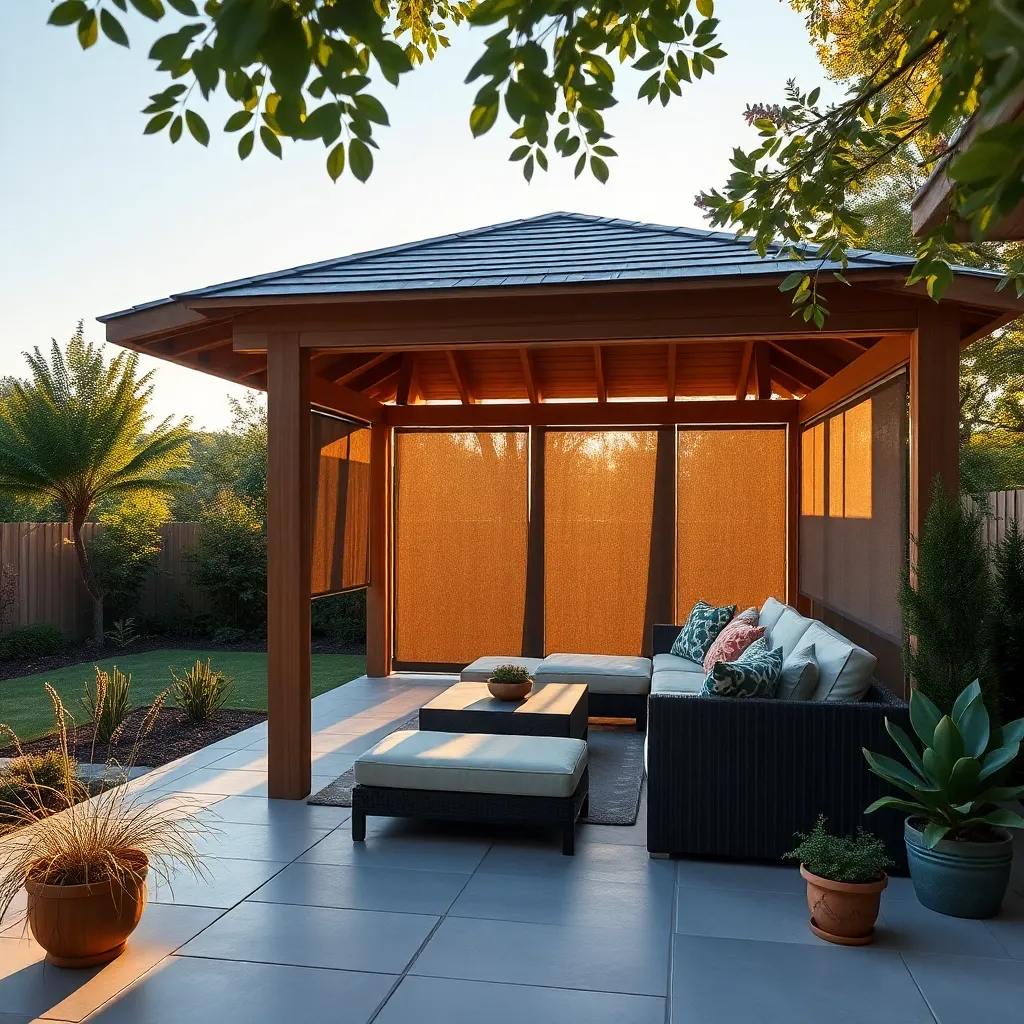
Enhancing your gazebo with retractable privacy screens is an excellent way to gain flexibility while enjoying your outdoor space. These screens allow you to easily adjust the level of privacy and shade, making your gazebo more versatile. For beginners, consider using durable, weather-resistant materials like polyester or vinyl mesh, which are easy to maintain and long-lasting. Ensure the screens are fitted with simple pulley systems or tracks for smooth operation, allowing you to effortlessly retract or extend them as needed.
For those seeking a more advanced approach, opt for motorized retractable screens that can be controlled remotely for maximum convenience. When selecting screen dimensions, measure the height and width of your gazebo openings to ensure a perfect fit. Consider adding UV protection features to not only enhance privacy but also provide additional sun protection. Installing retractable screens can significantly enhance your outdoor living experience by offering both seclusion and adaptability, making your gazebo a year-round retreat.
Utilize Space With Vertical Gardens
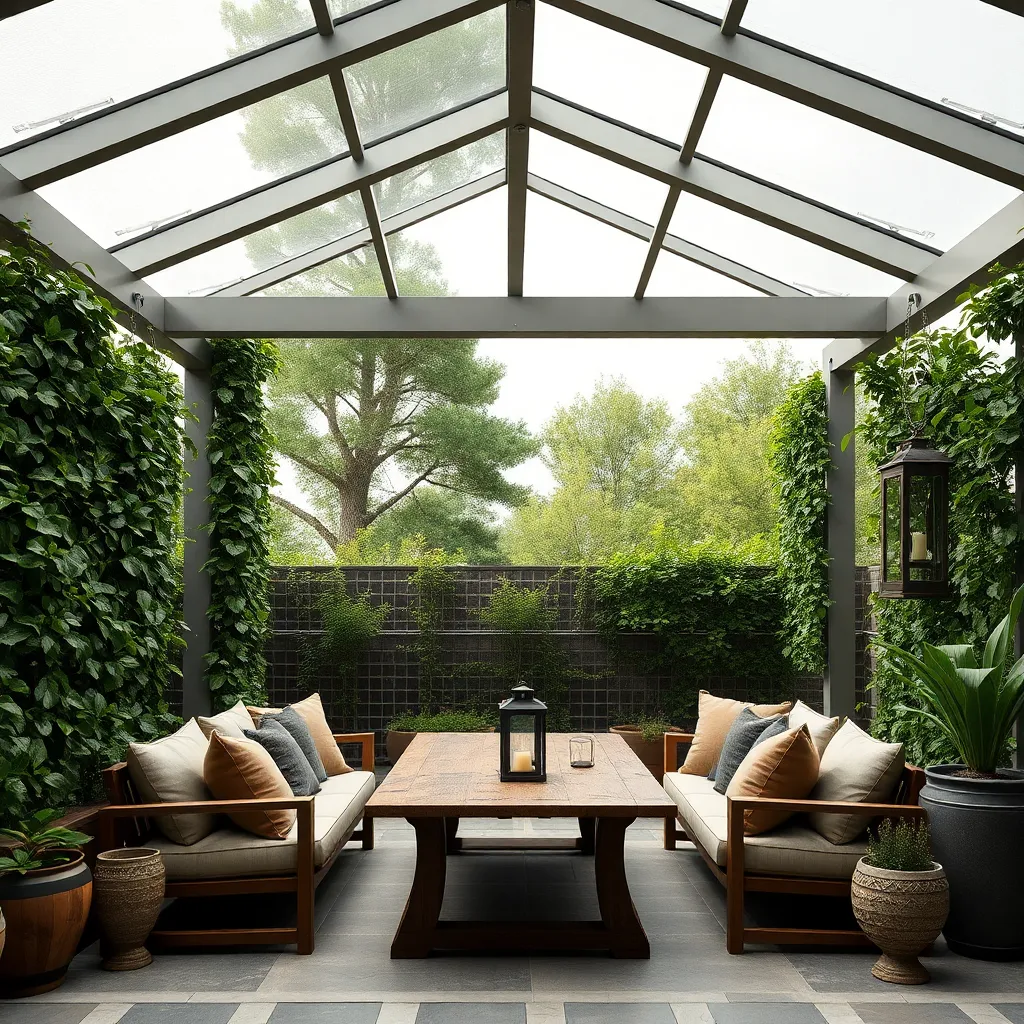
Transforming unused vertical spaces into lush gardens can add a refreshing dimension to your gazebo design. Begin by selecting sturdy materials like weather-resistant wood or metal trellises that can support a variety of plants. For beginners, start with easy-to-maintain plants such as ferns or succulents, which thrive with minimal care. Consider using wall-mounted planters or hanging pots that can be arranged to create a natural tapestry of greenery.
To enhance your vertical garden, incorporate elements like climbing vines or espaliered fruit trees for a more advanced setup. Choose plants that complement your climate and gazebo style, ensuring they receive adequate sunlight. Advanced gardeners might explore hydroponic systems to maximize growth potential and minimize soil use. Whether your goal is to beautify or create a privacy barrier, vertical gardens are a versatile option that can be tailored to suit any space or skill level.
Create a Central Firepit Feature
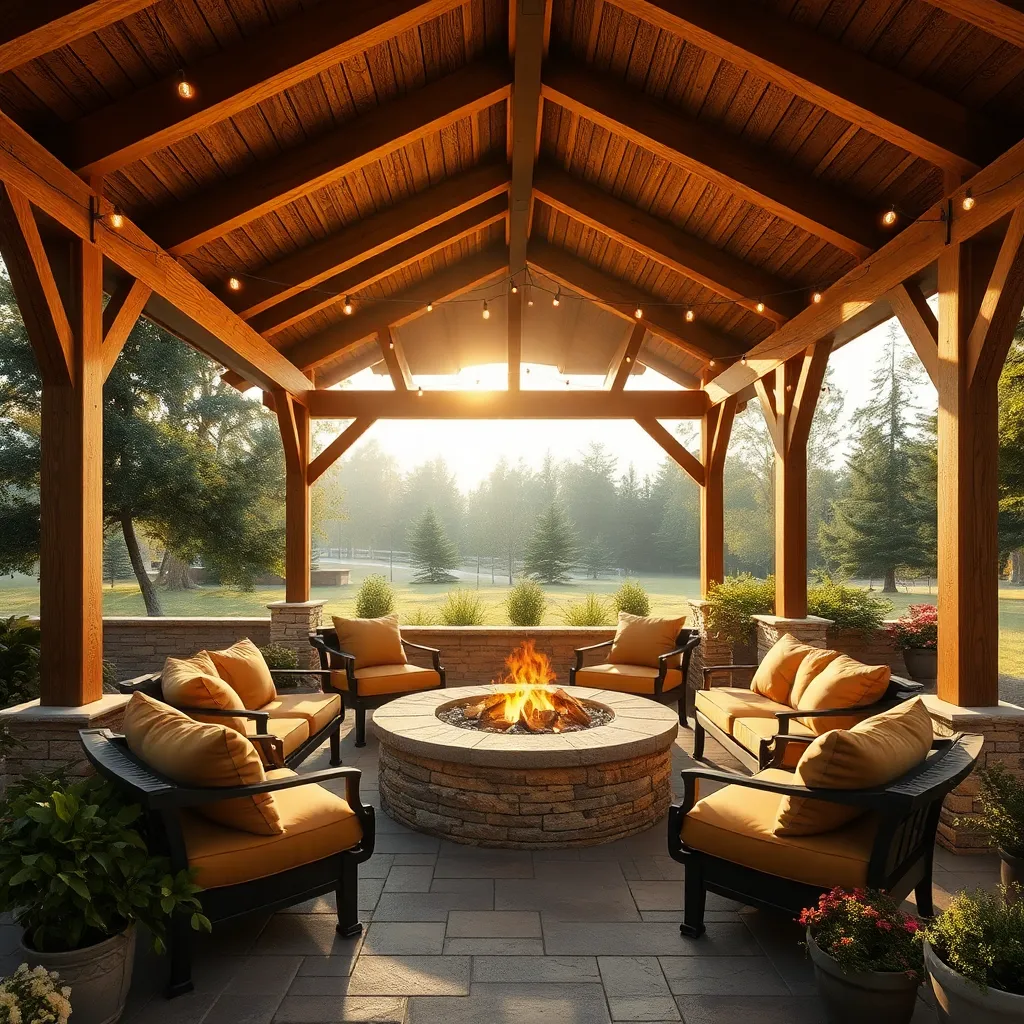
Creating a central firepit feature not only enhances the ambiance of your gazebo but also extends its usability into cooler evenings. Start by choosing a location that is safe and allows for good airflow—this will help disperse smoke effectively. Opt for durable materials like stone or metal that can withstand heat and weather conditions. For beginners, a pre-fabricated firepit kit is a simple solution, while DIY enthusiasts might prefer constructing a custom unit with fire-resistant bricks or pavers. Ensure the firepit is placed on a non-flammable surface, such as a gravel or brick base, to prevent any fire hazards.
Design elements play a crucial role in integrating the firepit seamlessly into your gazebo setup. Consider surrounding the firepit with comfortable seating, such as weather-resistant outdoor sofas or sturdy Adirondack chairs, to encourage cozy gatherings. For a cohesive look, match the materials of your firepit with other elements of the gazebo, like metal accents or stone pillars. Adding heat-resistant glass or lava rocks can enhance the firepit’s appearance and functionality by improving heat distribution. Remember to check local regulations regarding outdoor fires, and always prioritize safety by keeping a fire extinguisher or water source nearby.
Include Decorative Metal Accents
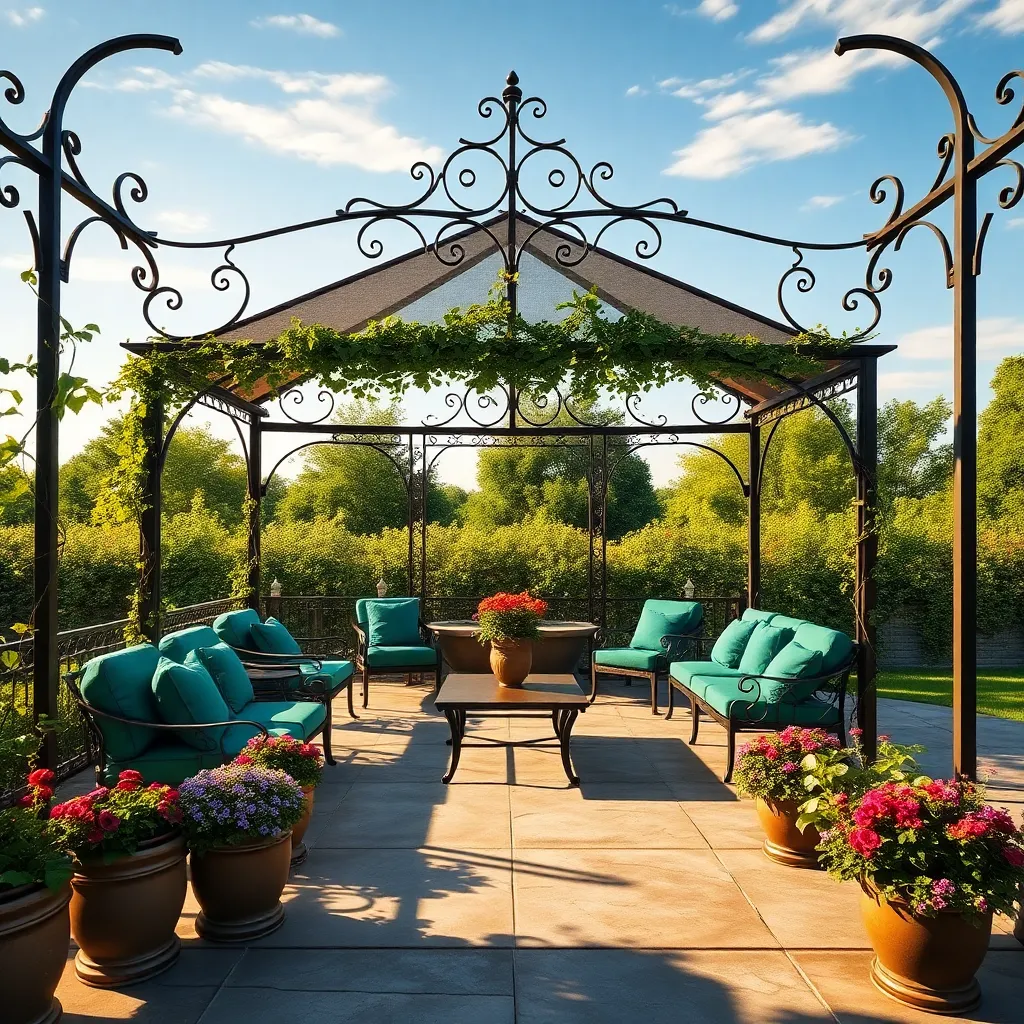
Incorporating decorative metal accents into your gazebo design can dramatically elevate its aesthetic appeal while ensuring durability. Consider using wrought iron or powder-coated steel for long-lasting, weather-resistant features. Beginners might start with simple elements like metal brackets or scrollwork on the roof edges, which are easy to install and provide an elegant touch. For a more advanced project, think about adding intricate metal lattice panels or custom metal screens as part of the gazebo’s walls, which can create stunning light patterns and offer additional privacy.
To achieve a cohesive look, choose metal accents that complement the overall design and color scheme of your outdoor space. It’s wise to match the metal finishes with other elements like outdoor furniture or lighting fixtures. For those feeling adventurous, consider using mixed metals to add a modern twist; combining materials like copper and stainless steel can create a unique, eye-catching contrast. Always ensure the metal is treated with a protective finish to prevent rust, especially in humid climates, ensuring your gazebo remains beautiful and functional for years.
Opt for Modular Gazebo Kits
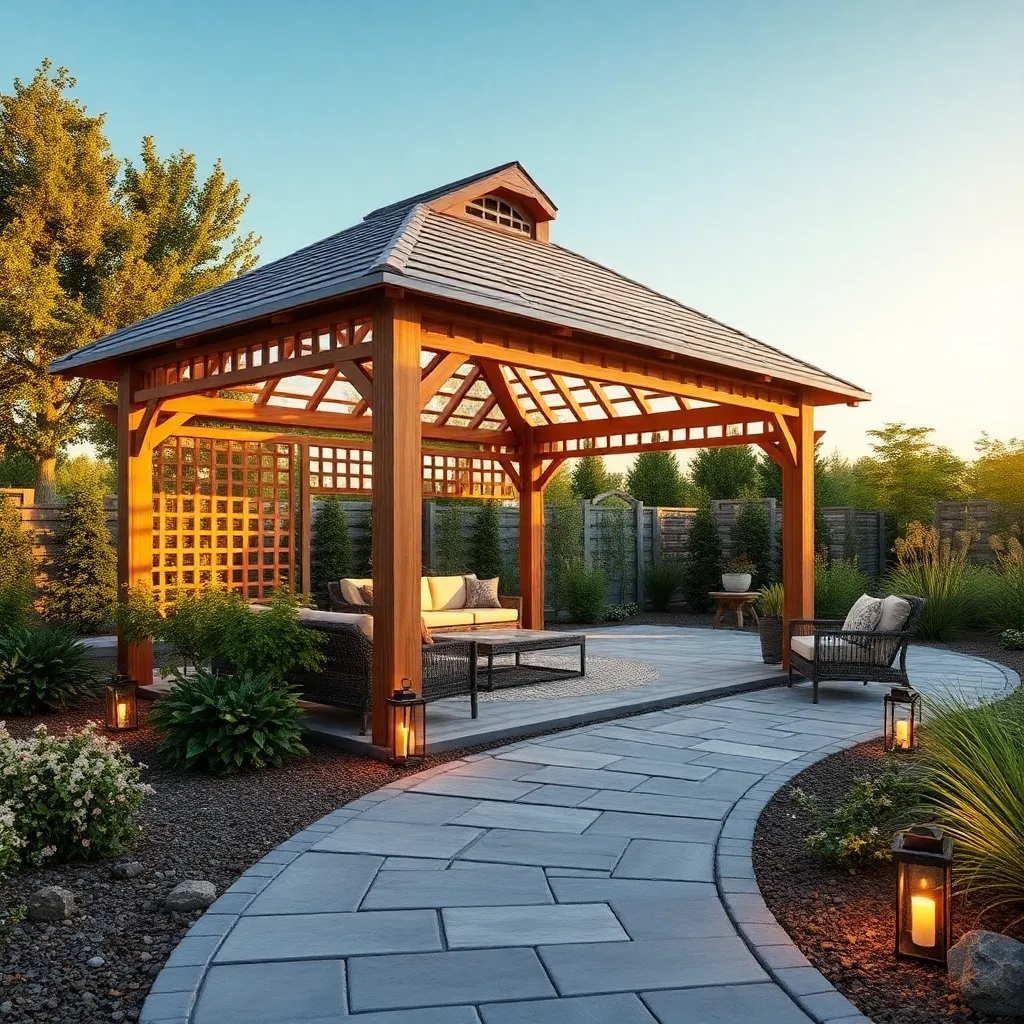
Consider modular gazebo kits for a versatile and customizable addition to your outdoor space. These kits come with pre-cut materials, making assembly straightforward even for beginners. Look for kits made from weather-resistant materials like treated wood or powder-coated aluminum to ensure durability. Most kits offer various sizes, typically ranging from 10×10 to 20×20 feet, allowing you to choose one that fits your space and needs perfectly.
For those looking to personalize their gazebo, many modular kits include optional add-ons such as screens or privacy panels. Advanced DIY enthusiasts can enhance their gazebo with features like built-in lighting or a shingle roof to match their home’s architecture. Ensure your foundation is level and sturdy, using concrete or gravel pads to anchor the structure. This practical approach allows you to enjoy the comfort and style of a gazebo without the complexity of designing one from scratch.
Blend Colors With Landscape Hues
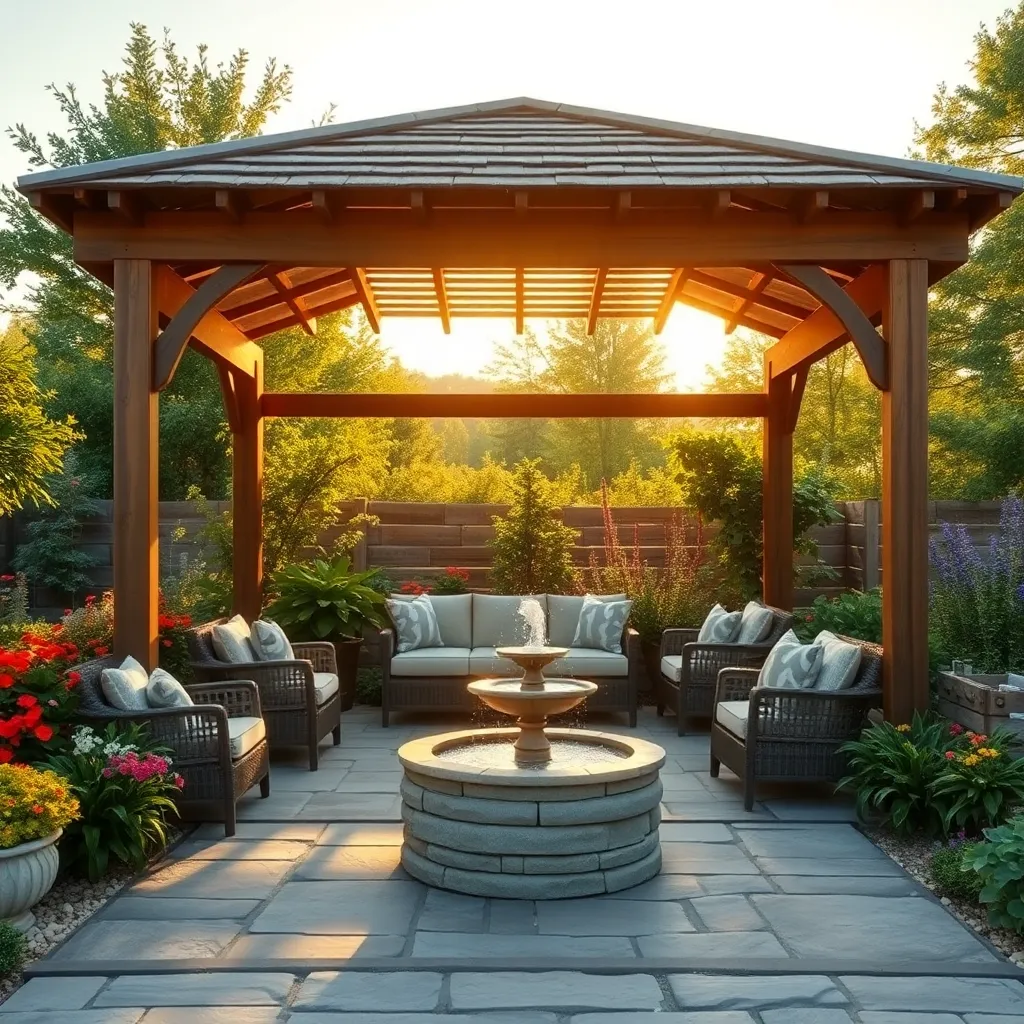
When designing your gazebo, it’s crucial to harmonize its colors with the natural surroundings. Start by observing the dominant hues in your landscape, such as the greens of foliage, earthy browns of soil, or colorful blooms. Use these observations to choose complementary paint or stain colors for your gazebo. For instance, a soft sage green may blend beautifully with lush gardens, while a muted terracotta can echo the warmth of a sunlit path. This approach not only integrates your gazebo into the environment but also creates a serene and cohesive outdoor space.
For a more advanced touch, consider incorporating natural materials that reflect the landscape, such as stone bases or wooden beams that match nearby trees. If your area features a lot of stone, consider using similar stone for your gazebo’s foundation or accents. This will enhance the natural feel and ensure your structure looks like it belongs. Additionally, using weather-resistant materials like cedar or teak for the gazebo’s construction can ensure durability while maintaining aesthetic appeal. By thoughtfully selecting colors and materials, you create a seamless transition between your garden and gazebo, making the space inviting and visually connected.
Conclusion: Creating Beautiful Outdoor Spaces
In exploring ’11 Gazebo Design Ideas for Your Next Project,’ we’ve delved into key relationship concepts like creating intimate spaces, fostering open communication, and embracing shared creativity. We touched on the importance of blending personal styles, nurturing a sense of togetherness, and leveraging outdoor sanctuaries to strengthen bonds. From incorporating cozy seating arrangements to choosing calming color palettes, each idea serves as a metaphor for building a resilient and harmonious partnership.
As your actionable next step, consider selecting one design idea that resonates with you and your partner. Discuss over a cup of coffee how this concept could be a catalyst for enhancing your connection and plan a small project together. This collaborative effort not only beautifies your space but also deepens your relationship.
To keep these inspirations handy, bookmark this article and revisit it whenever you need a spark of creativity or a gentle reminder of the value of working together. By nurturing these concepts, you’re paving the way for a flourishing relationship that stands the test of time. Remember, the foundation you build today will support the love and happiness you cherish tomorrow.
